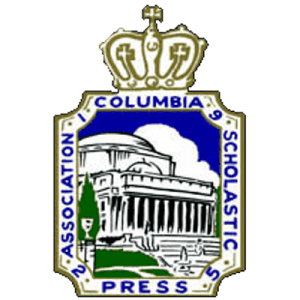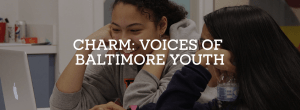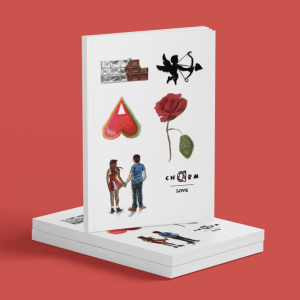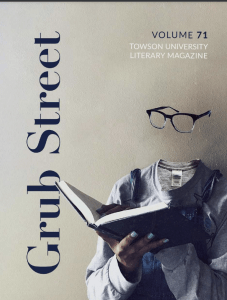Mr. Low was bent, sweaty, and his back ached. Nevertheless, he continued steady, erasing the phallic symbol scribbled on the third bathroom stall door in the eighth grade boys bathroom; there was no hurry. This was already the tenth one this year. Big and small, short and long, heavy on the balls or thick on the bat, last year he’d scrubbed away more than 25. You’d think these boys would get creative, at least experiment with the notion of a woman’s body. Nope, just poorly drawn and vastly exaggerated representations of their own sprouting organs.
Walker Low washed his hands, head bowed, and avoided his reflection. He pulled a paper towel from the third dispenser he’d replaced this year. The kids had a strange desire to destroy any aid to hygiene. Several of the sink handles had also been torn off, sometimes while running, so they sprayed in all directions, flooding the bathrooms. Stuffing sinks or toilets with massive wads of paper was a favorite pastime that also induced a wretched overflow. Soap dispensers were mostly made of plastic, so they had to be replaced a few times a week. And it was truly incredible how many times kids decided it was a good idea to just crap in the middle of the floor.
Right now the bathroom was pristine, and it felt like an accomplishment to eradicate the grime, but Mr. Low knew there was always something more to clean.
“Custodian to the auditorium, ASAP!”
Drying his hands and shaking his head, Mr. Low smirked, then frowned as he shuffled down the hallway toward the Jack Dee Wright Performing Arts Center. Who would believe he’d seen good Mr. Wright—wealthy businessman, philanthropist, and school board president—in a most untoward predicament just a few years before? All Mr. Wright had been wearing were purple and black argyle socks and a matching bow tie, and his gaunt frame was pulsating against Jenny Watkins, lovely young wife to Johnny Watkins, the superintendent of schools. Mr. Low was invisible. Neither of the two cheaters knew they’d been caught, and he decided to let the community keep their false icons.
Here came Ms. Hartshorne, the aged vice principal, who was suffering from an illness she tried to hide. She always smiled, and her gait was proud, her voice strong and clear. But Walker saw the pills, heard her vomiting late at night, and cleaned up the blood she’d failed to completely rinse away.
“I’m sorry, Walker. I don’t know why they can’t call you ‘Mr. Low’.”
Walker smiled.
“Well, anyway, come on, and let’s take a look. Bob’s freaking out because ol’ Jack Dee is coming tonight for the fall symphony and some kids took it upon themselves to welcome him with some adolescent art sculptures.”
“Let me guess?”
Ms. Hartshorne led Mr. Low down the aisle to the front row, where the backs of several chairs had new and unfriendly juvenile inscriptions below the plaques marked “reserved for the school board”. There were chairs enough for eight school board members and their families. So, a whole row of slurs and epithets, and each chair was covered with Saran wrap and a gloss of varied human excrement. The air teemed with rancid odor.
“Well, there are no poorly drawn male organs here. That’s a first.”
“Sorry, Walker.”
Ms. Hartshorne left Mr. Low to the work. He gathered his supplies: a screwdriver, trash can, gloves, a mop, disinfectant spray, and several disposable wiping cloths. He spent the rest of the afternoon in the auditorium and wondered what other mischief all the dear children were up to while he was so thoroughly occupied.
That night, Mr. Jack Dee Wright and his sweet and unknowing wife sat in clean chairs in the front row with their two youngest daughters. Their oldest, Veronica, played the flute in the front row of the woodwind section. She had lovely purple bows in her hair and wore a matching skirt that showed off her long, slender legs. Mr. Low sat in the back, unseen and ignored, but he enjoyed the music too. Afterwards, when all of the families had gone, he’d sweep through each row, thoroughly removing the debris carelessly left behind. If each person would just carry out what they’d brought in, it would save him an hour he could spend with his own children, but he didn’t complain.
When Walker Low got home well after dark, his wife, Leticia, was up. She met him at the door, kissed him gently on the cheek, and squeezed him around his waist. Then she led him to their kitchen table, sat him down, and pulled off his boots. She’d kept a kettle simmering while she waited, and hearing its shrill whisper, she poured a steaming cup of tea and stirred in some honey. Then she placed the warm mug snuggly between Walker’s worn hands.
Walker cupped his fingers over hers and leaned in, drew deep the aroma of mint, then smiled. He clasped one of her hands to his face, and closed his eyes, kissed it gently, then laid it back down. After a minute, he spoke.
“Well, what is it?”
“So—Bobbie’s team got new sweat suits. They got stripes down the side and their name on it and all. Coach Willis says Bobbie don’t have to get one, but he’ll sorta stick out if he doesn’t.”
Walker couldn’t remember his boyhood teams having anything special. Sometimes they didn’t even have matching jerseys, and he always had to wear hand-me-down high-tops. Kids these days always needed new this or that, but and to his mind, all that extra gear hadn’t improved little Bobbie’s jump shot in the slightest.
He also remembered having to borrow some younger kid’s brother’s glove whenever they played baseball and how deeply embarrassed he’d felt.
“What else?”
Leticia tried and failed to smile.
“Ellie’s struggling with her numbers again. Her teacher says she’s falling too far behind. She passed on a list of tutors.”
She sighed and sat back.
Walker leaned in. “So?”
“We’re over budget again this month, Walker.”
Walker Low bent over the tea, letting the steam moisten his face. He took a long, slow drink, sat back, and closed his eyes.
“Well, I bet they still need help for the tournament this weekend. I could ask Ms. Hartshorne to add me on for Saturday.”
“Walker, you need a break, too, and we’ve all been looking forward to being together this weekend for the show.”
Walker put his elbows on the table, rubbed his eyes.
“Didn’t you say Ellie’s main dance is in the second act? If I hurried, I might not miss the whole thing.”
Leticia covered her face.
A few minutes passed, then Walker stood and leaned over his wife, kissed her on the top of her head.
“It’ll be alright. You’ll explain it to Ellie for me, okay?”
Leticia stood, and the couple walked hand in hand down the hall of their small apartment and shuffled quietly inside their children’s bedroom. They knelt between the small beds. Lifting hearts in prayer, they silently asked for protection and for a beautiful and prosperous future. Deep in his heart, Walker asked the good Lord for more time at home with his family.
***
The next morning, Mr. Low was up early and back at school before anyone else. He liked the silence of dawn. No matter what destruction was done to his building each day, it always started out new, with fresh hopes for learning and growth among the children. Even though they increased his workload immensely, he still loved them. He also cared for the teachers, even though some of them were unkind.
One snappy teacher barked at him almost every day about erasing the chicken scratch notes he’d wanted to be left untouched. Mr. Low asked if he could leave a note on the board, but that seemed like a bridge too far, and so the young fellow continued to berate him like a child whenever they met.
“When are you gonna shampoo these damn floors?” another teacher demanded. Mr. Low wanted to tell her that he’d put in a request to do just that, five times, but Mr. Jack Dee and his friends at the school board did not feel that was a necessary expense. He’d also asked for funding to repair the roof leak over the basketball center court, but the board couldn’t find those funds either, and so Mr. Low had to endure the ire of coaches who thought it was his fault their games and practices were postponed or canceled whenever poor weather settled in.
Even Jack Dee had complaints, but they were of a different sort. He didn’t think it was a risk to share his true feelings with the likes of a no-name janitor.
“Can’t wait to get out of this town. Being overrun, if you know what I mean? I can barely understand what half of these new parents are saying in their broken-down English, and what the hell kind of religion do they practice over in that temple? Purple people with their many-armed goddesses. Dammit, when I moved here this was farm country. Quiet, and everybody looked like me. No offense.”
Apparently, ol’ Jack Dee only noticed late that Walker Low was black. He wondered what the president of the board and local hero said about him when he wasn’t around. But of course he knew Mr. Wright only thought about him now because he was in front of his face, listening to him whine. He wouldn’t think about him again until he turned down another budget request, and then he’d probably be grumbling and calling him “uppity”.
The weight of the job could get him down. Devoted, Walker had to focus on his love for the children, and despite separation of church and state, he prayed silently as he swept the halls and scrubbed the stalls and mopped the floors and helped kids into lockers that were jammed again and again each day.
He knew, perhaps as well as anyone in the building, how much suffering was here. He’d stooped to read forsaken notes that contained unspeakable sorrows. Failed marriages and dysfunctional homes, dying siblings, addict fathers and mothers. Sometimes, the scribbles spoke of cutting and killing, of self-inflicted pain. He’d bring these to the counselors or administration, but they mostly had no names, and so the heartbreak went untreated.
How many times he’d stumbled upon a weeping child hiding backstage in Jack Dee’s auditorium. Or in a locked stall in the boys bathroom. There was not a thing Walker did not observe, and some things grieved him more than others.
Most of the adults in the building loved the children as Mr. Low did, and offered up their lives to see them grow. But there were some who struggled with their own selfish desires. Some were mean to children because it made them feel strong when they’d only felt weak among adults. Some of these worshiped rules and an illusory order and sacrificed children daily at its altar. Others were poor lonely souls who wanted their students as friends, and so they could not be their mentors.
Mr. Harriet was a strange fellow, and Mr. Low saw that his eyes were always wandering below the waist. Walker once asked him if he needed help with anything, and he’d stared the teacher down and firmly gripped his hand. Mr. Harriet pulled back, turned away, and bellowed his curt response.
“You’re the janitor, right? Yeah, I’ll let you know when I need some help, buddy.”
But Mr. Low kept checking in on him, especially when Mr. Harriet became an advisor for the debate club, which met after school. Mr. Low wanted to say something to Ms. Hartshorne. There was nothing more than intuition, though, and he didn’t think it right to ruin a man’s life on a hunch. Still, he cleaned the adjoining classrooms during those debate meetings and happened to be sweeping in the hallways just outside Mr. Harriet’s room as the club let out, and what he witnessed unnerved him.
Mr. Jack Dee Wright’s daughter Veronica was in the club, and Mr. Low had learned she was a real whippersnapper. But she was soft around Mr. Harriet, and while this was not completely abnormal, it bothered Mr. Low, who could not ignore the keen look in the debate club advisor’s eye when he gazed a little too long.
One day, during winter, Mr. Low noticed a group of eighth grade boys in the lunchroom. They were giggling and pointing, and then he saw the object of their teasing was Veronica Wright. She was glancing back and forth from one friend to another and then back to the boys’ table. Suddenly, she stood and flew to the girls restroom covering her belly.
Mr. Low asked one of the lunch aides if they wouldn’t mind checking on her, but when he did, the aide abruptly walked past him to chastise a table of kids for trash left under their table. When she returned, Mr. Low tried again, but she blurted out that she was “really busy” and rushed past him, ignoring his plea. Mr. Low stared at the door to the girls bathroom and waited.
Several other girls eventually went in after Veronica, but came out again pinching their noses and looking miserable. Mr. Low kept his eye on the door, but when he saw Ms. Hartshorne walking by, he asked if she’d check on the girl. Moments later, she was leading young Veronica to the nurse and asking Walker if he’d clean the mess she’d left behind.
Closing the bathroom, Mr. Low went about cleaning up the vomit in and around the sink. He glanced up and saw the look of sadness in his own eyes and then lurched away, back out into the hall, and strode to the main office and Ms. Hartshorne. She said the girl was going to be okay, but there was something dishonest in her tone. Mr. Low nodded and wandered away to clean yet another beckoning disaster. This time some of the seventh grade boys had decided to urinate in the sinks.
The next time he cleaned up puddles of urine was two weeks later, when he was sent to clean the mess beneath Mr. Harriet’s desk. The debate club advisor had been arrested that morning. Mr. Low was near the front doors when they took Mr. Harriet away, his pants stained and his head bowed.
Earlier that morning, Mr. Low had gone into the girls restroom to empty the garbage, and when he pulled out the bag, it tore, and some of the trash fell on the floor. As he bent to sweep those stray pieces, one worn and many-folded note caught his attention. On the outside, written in purple, was the name ‘Mr. Harriet.’
Mr. Low leaned over the sink, gripping the sides. His intuition was clanging the alarm, so he slowly picked up and unfolded the note.
I really don’t want to “get rid of it” like you said, but if I did, would you give me a second chance? -V
Mr. Low never saw Veronica Wright again. She’d had an abortion, he heard, her father urging her to do what was best for the family. But he didn’t know for sure and wasn’t one to pry.
At the end of the year Ms. Hartshorne took an extended leave of absence, and Mr. Low turned to his summer duties, when he’d clean everything top to bottom and make the school new again. He would baptize the floors and walls and lockers and shelves, scrubbing them with antiseptic. All the while, he prayed for the brokenhearted ones he knew were still suffering. He could see their faces, hear their voices. And he spoke their names, wondering if everyone would make it back or if, like Veronica, they would drift out of his life forever. For those he offered a prayer like the one he said for his own children, begging for a beautiful future. He would have to let them go; come fall, there would be another thousand tender souls arriving.
Blake Kilgore is the author of Leviathan (2021), a collection of poems. A wanderer, he’s from the South and Midwest and now, the Northeast. Blake used to be a preacher but walked away to find his faith. He’s been winding his way back now, and love of his wife and four sons is a balm. A junior-high basketball coach and teacher, Blake is also refreshed by the idealism of his young students. His writing has appeared in Frost Meadow Review, Flint Hills Review, Lunch Ticket, and other fine journals.









